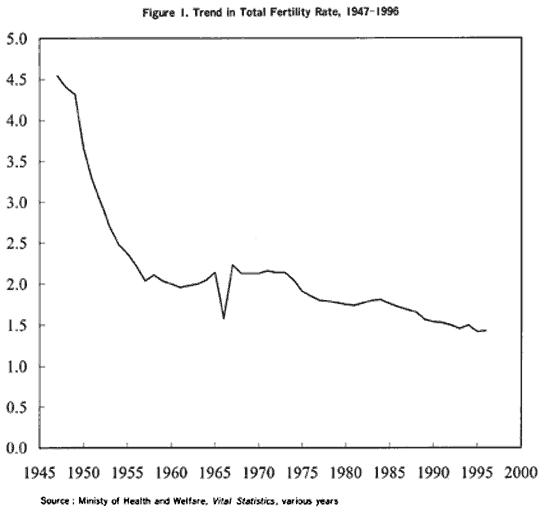
delayed marriage.
Either the increased proportion of never-married or the decreased proportion marriage
had serious impact over the fertility rate at the same time. In fact, the degree of the impact can be examined.
Table 1 shows the changes in total fertility rate by age groups beginning the year 1970. The table shows the analysis of how the changes due to proportion married and marital fertility rate had impact on the age groups. It shows that after the year 1970 and each term thereafter, the total fertility rate had declined. The reason is that the declined proportion marriage had always exceeded the change of the marital fertility rate. In fact, the marital fertility rate after the 1980 influenced the elevation of the total fertility rate. That is, the
declined total fertility rate at this term of years was not due to diminished numbers of child birth. It is clearly understandable then that the young people among the 20s had not married.
On the basis of the premise of the recent year's change in fertility rate, by analyzing the trends on marriage by each generation and on fertility among the married, it is possible to make the projection of the future total fertility rate. In the projection released in January of this year by the National Institute of Population and Social Security Research, the total